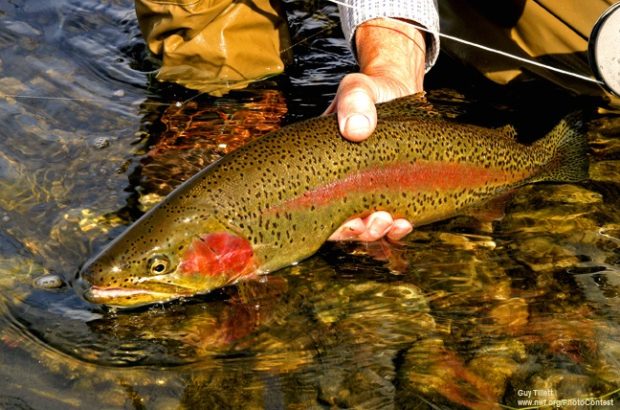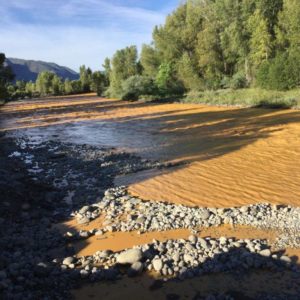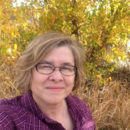We have much more to do and your continued support is needed now more than ever.
Hardrock Mine Pollution: Environmental Hits Just Keep Coming

“I wasn’t surprised that there wasn’t a big die-off of fish,” says Eddie Kochman, a retired state aquatics manager and member of the Colorado Wildlife Federation.
That’s because the immediate threat from the waste that turned parts of rivers in three states yellow eased as the blowout at the Gold King Mine was stemmed. Flows from the rivers eventually diluted the toxins, including lead, arsenic, cadmium, beryllium and mercury.
But it won’t be clear for a while how much of those harmful substances remain in the sediment along the river banks and what the long-term impacts will be. Thousands of old and inactive mines continue to leak making conservationists like Kochman fear for the overall health of the West’s rivers and streams and the fisheries.

Although the Animas was reopened to recreation, questions remain for downstream users about the water quality. Navajo tribal members who draw water from the river to irrigate their crops are still not using the water because of concerns about lingering pollution.
More than a Century in the Making

The circumstances were similar to the Gold King Mine, where an EPA contractor caused the rupture. The crew was investigating a buildup of water in the mine when a dirt berm holding back wastewater was breached. After news of the Crested Butte mine spill, critics of the EPA were again swift to lash out.
“Once again the Environmental Protection Agency has apparently endangered Colorado’s waterways while drilling at an abandoned mine.” Colorado Attorney General Cynthia Coffman told The Denver Post.
In September, members of Congress used the Animas River spill as an opportunity to flog the EPA for its “far-left environmental agenda.”
Disasters Waiting to Happen
The truth is the Gold King Mine mess was a disaster waiting to happen. It’s just one of a handful of old polluting mines high in the San Juan Mountains. Those mines and thousands of others across the country have been allowed to fester under a law that, despite repeated attempts, has changed little since its adoption in 1872.
The law, originally designed to encourage the settlement of the West, still allows miners to extract gold, silver, and uranium from public lands without paying royalties and fees, similar to those paid by the coal industry to clean up abandoned coal mines.
Time for a Change

Change is way overdue, says Kochman, who doesn’t have to venture far from his cabin in Colorado’s South Park to find evidence of what happens when accidents occur. He’s still sifting through sediment that washed down the Middle Fork of the South Platte when water in a holding pond at the active Alma Placer Mine spilled Oct. 3, 2014. The water turned a brownish-yellow for about 15 miles. Kochman worries about the long-term effects on the flies that feed the trout in the tributary that’s among the region’s most popular fisheries.
The mine, which produces gold and gravel, was fined. All but $5,000 of the fine was suspended.
Meanwhile, in the mountains above Kochman’s cabin, a constant stream of acidic metals flows from the old inactive London Mine into Mosquito Creek, which runs into the South Platte River. The creek is devoid of life. Problems with a treatment plant has resulted in releases of zinc, cadmium and other pollutants.
“We’re going to be dealing with this forever,” said Bill Dvorak, NWF’s public lands organizer in Colorado, during a recent tour of South Park by EcoFlight.
![]() Tell Congress to end 140 years of public subsidies for the hardrock mining industry and use the resulting royalties to clean up toxic mines!
Tell Congress to end 140 years of public subsidies for the hardrock mining industry and use the resulting royalties to clean up toxic mines!






















